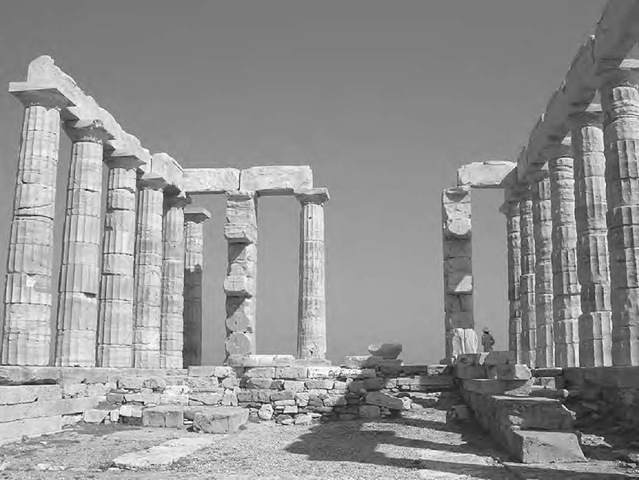The first systematic study of temple orientations in ancient Greece was carried out by Heinrich Nissen in the nineteenth century. William Dinsmoor, carrying out another study in the 1930s, concluded that almost three quarters (73 percent) of them were oriented eastward within the range of sunrise. Some were oriented on sunrise on the feast day of the deity to whom the temple was dedicated. One example is the Parthenon itself, dedicated to Athena. It is not only aligned upon the sunrise on the feast day of Athena but also upon a prominent hill—Mount Hymettos. How widespread or long-lasting this practice was is a hard question to answer. The evidence is complicated by the fact that many temples were reconstructed on a different orientation or their dedication was changed. Historical sources also make it clear that sunrise was not always the principal concern. The Greek writer Vitruvius, in his work De Architectura, indicates that there was sometimes a preference for facing nearby cities or directions of approach along rivers or roads.
It has been suggested that the predominantly easterly orientation of Greek temples may reflect broader orientation practices extending back as far as the Bronze Age. The Minoan culture survived on the island of Crete until the middle of the second millennium b.c.e., after which the Mycenaeans from the Greek mainland took control. Elements of both Mycenaean and Minoan orientation practices may have come to influence Archaic and, in due course, Classical Greek temples, but the practice of easterly orientation seems to derive from the Minoans. Studies of the orientations of over three hundred Bronze Age passage tombs on Crete, dating back to the mid-third millennium b.c.e., show a very strong easterly trend, with over 80 percent of them lying within the solar arc. An even higher proportion (about 87 percent) are within the slightly wider lunar arc. Over half the data are derived from a single cemetery, Armenoi in western Crete. Each of the more than two hundred tombs there is oriented within the range of moonrise; and it is surely not coincidental that three kilometers (two miles) to the east is Mount Vrysinas, upon whose summit was a peak sanctuary apparently, although not certainly, dedicated to a moon goddess.
The Temple of Poseidon at Sounio, Greece, viewed toward the entrance. Like many such temples it faces within a few degrees of east.
The development of mathematical astronomy in ancient Greece from around 400 b.c.e. onward seems to have derived in large part from ancient Babylonia. However, in constructing large stone temples as far back as the seventh century b.c.e., the ancient Greeks acquired both inspiration and technological expertise from ancient Egypt. This linkage opens up the possibility that some of the more symbolic aspects of Greek temple construction, such as architectural alignments upon celestial objects, also derived from ancient Egypt, where there is cultural continuity stretching back into the third millennium b.c.e. Studying the common aspects of astronomical symbolism incorporated in Greek and Egyptian temples may throw more light on this possibility in the future.

